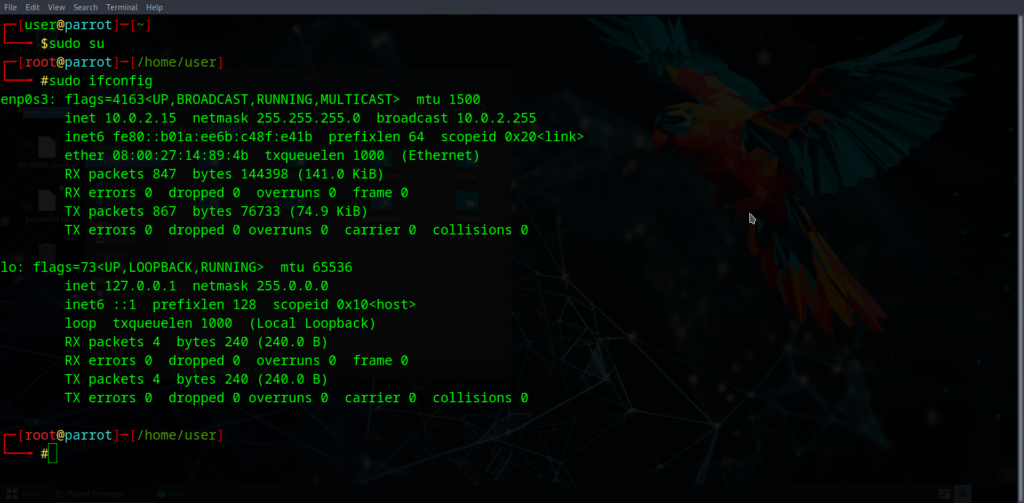Aggressive website technology discovery on an IP range involves using various tools and techniques to gather detailed information about the technologies used by websites within a specific IP range. This process is often part of reconnaissance in ethical hacking and cybersecurity assessments. Here are some common tools and methods used:
- WhatWeb: This tool identifies websites’ technologies, including web servers, content management systems (CMS), and frameworks1.
- theHarvester: Useful for gathering emails, subdomains, hosts, and more from public sources like search engines1.
- Nmap: A powerful network scanner that can detect open ports, services, and even the operating systems of devices on a network1.
- Red Hawk: An all-in-one tool for information gathering, vulnerability scanning, and more1.
- Burp Suite: A comprehensive platform for web application security testing1.
These tools help in identifying potential vulnerabilities and understanding the technology stack of websites within the targeted IP range. It’s important to use these tools ethically and with proper authorization.
Are you interested in learning more about any specific tool or technique?
WhatWeb is a versatile web scanner designed to identify the technologies used by websites. It can detect a wide range of web technologies, including content management systems (CMS), web servers, frameworks, and more. Here are some key features and uses of WhatWeb:
Key Features:
- Technology Detection: Identifies various web technologies such as CMS, blogging platforms, JavaScript libraries, and web servers.
- Plugins: Comes with over 1800 plugins to recognize different technologies and components1.
- Aggression Levels: Supports different levels of scanning aggression, from stealthy (minimal requests) to thorough (more detailed interrogation)1.
- Customizable: Allows users to write their own plugins and customize the scanning process1.
- Output Formats: Supports multiple output formats for logging and reporting1.
Common Uses:
- Reconnaissance: Used in the initial stages of penetration testing to gather information about the target website.
- Technology Inventory: Helps in creating an inventory of technologies used across different websites.
- Vulnerability Detection: Identifies potential vulnerabilities based on the detected technologies.
Example Command:
- Basic Scan:
whatweb <target_url> - Aggressive Scan:
whatweb -a 3 <target_url>
WhatWeb is a powerful tool for anyone involved in web security, from ethical hackers to system administrators. It provides a comprehensive overview of the technologies powering a website, which can be crucial for security assessments.
Would you like to know more about how to use WhatWeb in a specific scenario?
theHarvester is a powerful open-source tool designed for gathering open-source intelligence (OSINT) during the reconnaissance phase of penetration testing. It helps in collecting valuable information about a target from various public sources. Here are some key features and uses of theHarvester:
Key Features:
- Email and Subdomain Collection: Gathers email addresses and subdomains associated with a target domain.
- Hostnames and IPs: Identifies hostnames and IP addresses related to the target.
- Employee Names: Extracts names of employees from public sources.
- Public Data Sources: Utilizes multiple search engines and public data sources like Google, Bing, LinkedIn, and more1.
- Customizable Searches: Allows users to specify the number of results and the sources to be used2.
Common Uses:
- Initial Reconnaissance: Used in the early stages of penetration testing to gather information about the target’s external footprint.
- Vulnerability Assessment: Helps in identifying potential vulnerabilities by revealing the technologies and services used by the target.
- Security Audits: Assists organizations in understanding what information about them is publicly accessible.
Example Command:
- Basic Usage:
theharvester -d example.com -l 500 -b google-d: Specifies the domain to search.-l: Limits the number of results.-b: Specifies the data source (e.g., Google, Bing).
theHarvester is a versatile tool that can be used by security professionals to gather a comprehensive overview of a target’s online presence. It’s particularly useful for identifying potential entry points and understanding the scope of a target’s internet footprint.
Would you like to know more about how to use theHarvester in a specific scenario?
1: Kali Linux Tools 2: Hacking Loops
Nmap (Network Mapper) is a powerful and versatile open-source tool used for network discovery and security auditing. Here are some key features and uses of Nmap:
Key Features:
- Host Discovery: Identifies active devices on a network.
- Port Scanning: Detects open ports on a target device, which can reveal services running on those ports.
- Service Detection: Determines the services (e.g., HTTP, FTP) and their versions running on open ports.
- Operating System Detection: Identifies the operating system and its version on the target device.
- Scriptable Interaction: Uses the Nmap Scripting Engine (NSE) to automate a wide variety of tasks, including vulnerability detection and network inventory.
Common Uses:
- Network Inventory: Creating a map of the network to understand its structure and the devices connected.
- Security Auditing: Identifying vulnerabilities and potential entry points for attackers.
- Monitoring Host or Service Uptime: Ensuring that critical services are running and accessible.
- Penetration Testing: Used by ethical hackers to simulate attacks and identify weaknesses.
Example Commands:
- Basic Scan:
nmap <target> - Scan a Range of IPs:
nmap 192.168.1.1-254 - Service Version Detection:
nmap -sV <target> - Operating System Detection:
nmap -O <target> - Using NSE Scripts:
nmap --script <script_name> <target>
Nmap is highly customizable and can be used for both simple and complex network scanning tasks. It’s a valuable tool for network administrators, security professionals, and anyone interested in understanding their network better.
Would you like to know more about how to use Nmap in a specific scenario?
REDHAWK
REDHAWK is a software-defined radio (SDR) framework designed to support the development, deployment, and management of real-time software radio applications. Here are some key features and uses of REDHAWK:
Key Features:
- Component-Based Architecture: Allows the development and testing of software modules called “Components” which can be combined into “Waveform Applications”1.
- Integrated Development Environment (IDE): Provides tools for developing, testing, and deploying REDHAWK applications. The IDE supports graphical editors and drag-and-drop waveform construction1.
- Distributed Processing: Enables the deployment of applications across multiple network-enabled computers, supporting real-time distributed applications2.
- Hardware Abstraction: Decouples specialized hardware from processing algorithms, making it easier to port algorithms to new platforms2.
- Metadata Tagging and Precision Time-Stamping: Supports tagging of data streams and precise time-stamping, which is crucial for signal processing applications2.
Common Uses:
- Signal Processing: Ideal for applications that require real-time signal processing across distributed systems.
- Software Radio Development: Facilitates the development of software-defined radio applications by providing a robust framework and tools.
- Research and Development: Used in academic and industrial research for developing and testing new communication technologies.
Example Applications:
- Military Communications: Used in developing secure and efficient communication systems for defense applications.
- Telecommunications: Helps in the development of advanced telecommunication systems and protocols.
- Scientific Research: Supports various scientific research projects that require real-time data processing and analysis.
REDHAWK is a powerful tool for anyone involved in the development of real-time distributed applications, particularly in the fields of telecommunications and signal processing.
Would you like to know more about how to use REDHAWK in a specific project?
1: REDHAWK Description 2: REDHAWK Manual
Burp Suite
Explore
Burp Suite is a comprehensive set of tools used for penetration testing and security assessment of web applications. Developed by PortSwigger, it is widely used by security professionals and ethical hackers. Here are some key features and components of Burp Suite:
Key Features:
- Proxy: An intercepting proxy that allows you to inspect and modify traffic between your browser and the target application.
- Spider: A web crawler that maps out the target application by discovering its endpoints and structure.
- Scanner: An automated tool that scans for various types of vulnerabilities in web applications (available in the Professional edition).
- Intruder: A powerful tool for automating customized attacks, such as brute force and fuzzing.
- Repeater: Allows you to manually modify and resend individual HTTP requests to test how the application responds.
- Sequencer: Analyzes the randomness of session tokens and other data items.
- Decoder: Helps in encoding and decoding data in various formats.
- Comparer: A utility for performing a visual comparison between two pieces of data.
- Logger: Records and analyzes HTTP traffic generated by Burp Suite.
- Extensions: Supports add-ons called BApps, which can extend its functionality12.
Common Uses:
- Vulnerability Assessment: Identifying and verifying vulnerabilities in web applications.
- Security Auditing: Conducting thorough security audits to ensure the robustness of web applications.
- Penetration Testing: Simulating attacks to find and fix security weaknesses.
- Bug Bounty Hunting: Used by researchers to find and report security flaws in exchange for rewards.
Example Workflow:
- Intercept Traffic: Use the Proxy to capture and inspect HTTP requests and responses.
- Map the Application: Use the Spider to discover all the endpoints and functionalities of the target application.
- Scan for Vulnerabilities: Run the Scanner to automatically detect common vulnerabilities.
- Manual Testing: Use tools like Repeater and Intruder to manually test and exploit potential vulnerabilities.
Burp Suite is available in different editions, including a free Community edition, a Professional edition with advanced features, and an Enterprise edition for large-scale automated scanning1.
Would you like to know more about a specific feature or how to use Burp Suite in a particular scenario?
1: GeeksforGeeks 2: PortSwigger Documentation
command sudo ifconfig




